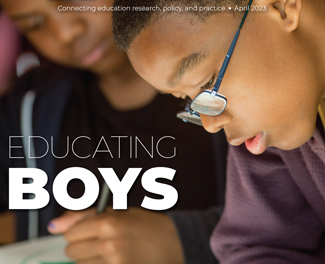When we asked our Educators Rising students to share their leadership experiences, most of them mentioned extracurricular activities. When I was a student, I would have said the same, and I suspect many of you reading this would have, too. The authors in this issue, however, suggest that student leadership has a place in the classroom, too.
A leadership-oriented curriculum shouldn’t involve merely learning about leaders, as Lisa DaVia Rubenstein and her co-authors point out. In fact, day-to-day classroom activities present opportunities for students to learn leadership by being leaders. Many students take on that role naturally during group activities, but teachers can help all students reflect on how they interact with peers to accomplish a goal. Through reflective practice, students can build skills they’ll need to lead throughout their lives — in their homes, workplaces, and communities.
Students can also practice leading at the school level by getting involved in decision making. As Tom Capretta and his co-authors from The Ohio Statewide Family Engagement Center explain, students have a lot of valuable insights to share with their schools, families, and communities that can inform how these groups work together. But their voices are rarely centered in partnerships among these groups. And Dane Stickney and Julissa Ventura note that efforts to listen to student voices are often limited to merely allowing students to express their views. They’re not given actual power to bring about the changes they want.
Jennifer Tran of the National Student School Board Member Association is part of a movement to give students a literal seat at the decision-making table as members of their local school board. Depending on the state or district, student school board members may be able to express their views on matters under discussion, help set priorities for the district, and even vote.
Giving students actual power, whether in the classroom or on the school board, is scary for a lot of adults. As brilliant as our young people are, a certain amount of wisdom comes with age and experience. But, done right, student leadership gives students opportunities to practice making decisions and creating change, with the oversight of adults. The transformative student voice initiatives that Stickney and Ventura describe don’t leave students on their own, with adults watching from the sidelines. Adults are part of the process. And students get opportunities to practice leading in ways that benefit their schools.
Students can also practice leading in their communities through programs like Civic Engagement in Our Democracy, a project-based civics curriculum in which students seek to help solve problems in their community. In their article on the curriculum, Natalie Sew and her co-authors share examples of students educating their communities about school tax initiatives and advocating for healthy food in a local corner store. But they also share students’ reflections on the challenges of leading change — how they had to learn to take care of themselves or manage disagreements. And the Center for Inspired Teaching’s Speak Truth program gives students structures to lead conversations about contentious issues. Jenna Fournel and Aleta Margolis note that students will encounter conflict in their lives. Their program helps students learn to make conflict more productive.
Opportunities like these allow students to see that their efforts to lead actually can make a difference. And the hope is that they’ll keep trying to make a difference beyond school. Leadership practice, in this case, can make more perfect schools, communities, nations, and world.
This article appears in the May 2024 issue of Kappan, Vol. 105, No.8, p. 4.
ABOUT THE AUTHOR

Teresa Preston
Teresa Preston is editor-in-chief of Phi Delta Kappan and director of publications for PDK International, Arlington, VA.
Visit their website at: https://pdkintl.org/












